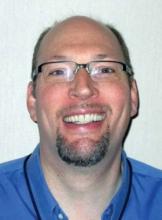KAUAI, HAWAII – The way Dr. James (Jay) H. Shore sees it, current advances in technology are transforming the practice of psychiatry more than at any other time in history.
"The information age holds this beautiful promise of crossing the quality chasm and getting to a patient-centered health care where we’re moving from centralization to redistributing the health care to where the patient is," he said at the annual meeting of the American College of Psychiatrists. "I would say that it is a promise that has yet to be achieved."
One of the most important advances over the past 20 years, he said, has been the maturation of convergence science – the concept of bringing disparate scientific disciplines and fields together to work on problems. "I think psychiatry has been on the leading edge of convergence science in the fact that we often turned to the humanities in the beginning of our field to find models and conceptualizations for how the brain works," explained Dr. Shore, an associate professor in the department of psychiatry at the University of Colorado Denver Anschutz Medical Campus. "Nowadays, teams of engineers, mathematicians, and bioscientists are working more closely with physicians."
He discussed three examples of ways in which convergence science is helping clinicians to better understand brain mechanisms. The first involves reconstructing visual experiences from brain activity evoked by natural movies. The effort, spearheaded by researchers at the University of California, Berkeley, and described in the journal Current Biology, uses blood oxygen level–dependent signals measured by functional magnetic resonance imaging to measure brain activity in subjects who viewed natural movie scenes (Current Biol. 2011;21:1641-6). "These subjects are having their visual lobes read by functional MRI connected to a computer program that is attempting to reconstruct what the MRI is reading in their brain," said Dr. Shore, who was not involved with the study. "The computer is drawing off of a database of 18 million images. Basically, what you have is a computer reading someone’s mind as they look at a visual stimulus."
The second technology he discussed is a brain-computer interface known as the BrainGate system, an investigational device that allows people with physical disabilities to increase their independence by controlling a computer with their thoughts. Clinical study participants undergo a surgical procedure where a sensor smaller than a contact lens is placed on the area of the brain responsible for movement. The sensor records electrical signals from the brain. These signals feed into a device, where they are interpreted by an operator using special software. To date, clinical studies have involved the use of BrainGate to check e-mail, change the channels of a television, and use a personal computer, said Dr. Shore, who is also with the Centers for American Indian and Alaska Native Health at the University of Colorado.
The third example of convergence science Dr. Shore discussed is the Blue Brain Project, a half-billion-dollar effort based in Switzerland and intended to construct a complete virtual human brain. "This is not an exercise in artificial intelligence, which uses software to mimic call and response," Dr. Shore said. "They started with a computer simulation model of a single neuron. By 2014, they are on target to have a fully functional artificial rat brain, and by 2023 they propose to have a fully functional human brain computer simulation. This project is really pushing us to understand mechanistically the relationships and networks within the brain."
In the current clinical realm, a variety of technologies are being used for patient care each day, including video conferencing, which "is part of standard psychiatric practice," Dr. Shore said. "The current trend is using smaller devices. I have colleagues who are providing care to patients through video conferencing on their mobile devices and computer tablets. That’s a mature application of technology."
He predicted that mobile telephone technology will drive future models of health care delivery. This is already playing out, he said, noting that an estimated 3,000 to 4,000 of the iPhone’s 13,000 apps are dedicated to some aspect of mental health care. "There are no good studies on these apps yet," Dr. Shore said. "From feasibility studies, we know that patients and providers are using them, but we have no idea how, or how they affect outcomes. It’s kind of like the Wild West out there with apps."
In another development, Dr. Shore discussed work occurring at the Telemedicine and Advanced Technology Research Center (TATRC), an office of the headquarters of the U.S. Army Medical Research and Materiel Command. TATRC has a research program bringing together academia and experts in the video game industry to create a video game "that will passively do neuropsychiatric screening assessment and tracking of the subject, things like reaction time, executive function, and task-shifting, for patients with deployment-related mental health issues such as traumatic brain injury or PTSD [post-traumatic stress disorder]," Dr. Shore said.


